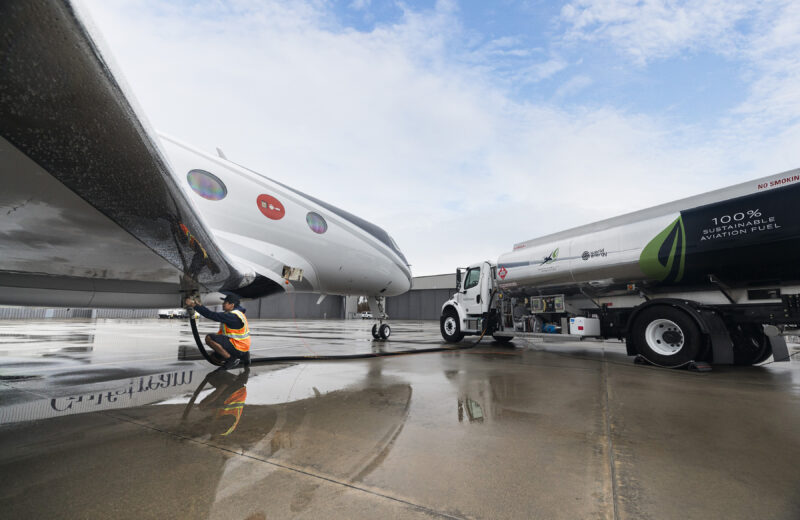Chip pan oil powers Gulfstream across Atlantic

A Gulfstream G600 was the first aircraft to fly the Atlantic powered by 100% Sustainable Aviation Fuel (SAF).
Aircraft manufacturers love them, but frankly no one else really cares about aircraft speed records.
We know they take a lot of planning, pilots get pumped up doing them and marketing people love announcing them. But holding the speed record for a flight between Poughkeepsie, Idaho and Rovaniemi, Finland is not exciting.
It is like going to a dinner party and finding out you are sat next to the man who lay in a bath of baked beans for more than 100 hours. Yes, they have a world record, but by the main course you are desperately trying to switch places with anyone who will catch your eye. And no one will.
But occasionally, there is a record worth celebrating.
On Monday, Gulfstream flew a G600 between Savannah and London Farnborough 100% powered by Sustainable Aviation Fuel (SAF). This is the first time any aircraft has flown transatlantic entirely powered by SAF.
The SAF was made by World Energy in Paramount, California from used cooking oil and waste animal fats (like the fats left over from Thanksgiving Turkeys). It has at least 70% lower lifecycle carbon dioxide emissions than fossil-based jet fuel.
Both the aircraft’s Pratt & Whitney PW815GA engines were 100% powered by SAF. This is significant. Because SAF is purer than fossil Jet A, it does not have aromatics or sulphur that help engine sealants swell. Data from the six-hour 56-minute flight at cold temperatures is valuable for Pratt & Whitney. While the lack of aromatics is a challenge to engine manufacturers in the short term, it is a long-term advantage as SAF burns cleaner.
It is also important that business aviation did this first. Next Tuesday, Virgin Atlantic Airways will fly from London to New York using 100% SAF. (You wait ages for one transatlantic SAF flight and then two come together.) As the new “Climbing.Fast” industry campaign stresses, business aviation is often the testbed for all aviation. Gulfstream has done this.
“One of the keys to reaching business aviation’s long-term decarbonisation goals is the broad use of SAF in place of fossil-based jet fuel,” said Mark Burns, CEO, Gulfstream.
“The completion of this world-class flight helps to advance business aviation’s overarching sustainability mission and create positive environmental impacts for future generations.”
There is still a lot of scepticism from people in business aviation about SAF. We don’t share this. It is critical to aviation becoming carbon neutral by 2050. IATA estimates that 60% of all carbon savings will come from SAF.
More efficient air traffic control, better ground handling and new energy sources including electric aircraft and hydrogen are important (and this week saw the first hybrid short take-off and landing aircraft by Electra Aero), but SAF has to do the heavy lifting.
While Gulfstream’s flight is a great achievement, the biggest problem for the industry is the availability of SAF. In 2022, SAF accounted for less than 1% of all jet fuel – around 300m litres.
The amount being produced by companies like World Energy and Neste is increasing, but there is a long way to go. By 2050, the industry will need 450bn litres.
The EU has also mandated that by 2030, 5% of all jet fuel needs to be SAF. This is achievable. But in 2035 it rises to 20%. Hitting this will require massive investment. By 2050, some 63% of all jet fuel in Europe must be SAF. The US government’s SAF Grand Challenge aims to produce 3bn gallons per year by 2030 and 35bn gallons by 2050.
There really needs to be a race to produce more. Maybe we need to think of a way of turning it into a world record. But remember, SAF is just pure Jet A1. No one should sit in a bath of it.
Subscribe to our free newsletter
For more opinions from Corporate Jet Investor, subscribe to our One Minute Week newsletter.








